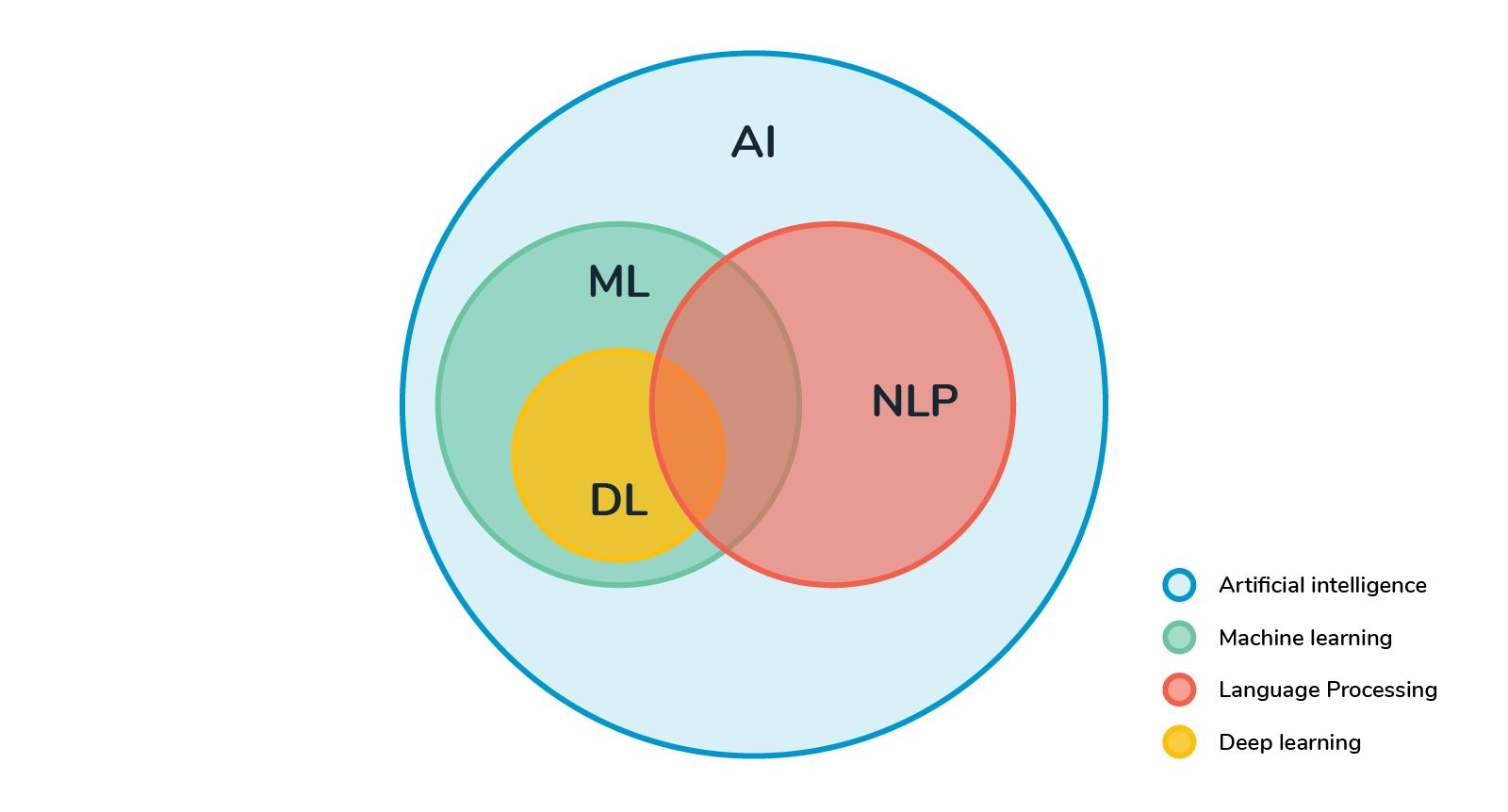Introduction
Welcome to the exciting world of machine learning! It is a field at the forefront of technological advancements and is rapidly shaping the way we live, work, and interact. Machine learning has the potential to revolutionize industries such as healthcare, finance, marketing, and many more. If you are curious about this field and want to break into machine learning, you’ve come to the right place.
Machine learning, in simple terms, refers to the ability of machines to learn and improve from experience without being explicitly programmed. It involves the development of algorithms and models that enable computers to automatically learn and make predictions or decisions based on data. From self-driving cars to personalized recommendations on online platforms, machine learning is behind many of the innovations we see today.
So, why should you consider breaking into machine learning? The demand for machine learning professionals is skyrocketing. Companies across various industries are actively seeking professionals who can harness the power of data and machine learning to drive business growth and innovation. In fact, machine learning engineer roles have been consistently ranked as one of the top emerging jobs by various industry reports.
The field of machine learning offers not only lucrative career opportunities but also immense scope for personal and intellectual growth. By learning machine learning, you can become part of a community of passionate individuals who are pushing the boundaries of what is possible with technology. You will constantly be challenged to think critically, solve complex problems, and stay up-to-date with the latest advancements.
Before diving into machine learning, it is important to understand the skills required for this field. While a background in computer science or mathematics can be beneficial, it is not a prerequisite. What matters most is a strong foundation in programming, a curious mindset, and a willingness to learn and adapt. In this article, we will explore the essential skills needed to succeed in machine learning and provide practical tips for getting started.
Whether you are a seasoned developer looking to transition into machine learning or a student exploring career options, this guide will equip you with the knowledge and resources to kickstart your journey. Let’s dive in and unlock the exciting opportunities that await in the world of machine learning!
What is Machine Learning?
Machine learning is an integral part of artificial intelligence (AI) that focuses on the development of algorithms and models that allow computers to learn and make predictions or decisions based on data. Unlike traditional programming, where explicit instructions are provided to computers, machine learning enables machines to learn and improve from experience without being explicitly programmed.
At its core, machine learning aims to identify patterns and relationships in large datasets and use them to make accurate predictions or decisions. It uses statistical techniques and algorithms to analyze data, recognize patterns, and make informed predictions. The more data the machine is exposed to, the better it becomes at making accurate predictions.
Machine learning can be broadly categorized into three types: supervised learning, unsupervised learning, and reinforcement learning.
1. Supervised Learning: In supervised learning, the machine is provided with labeled training data, where each data point is accompanied by the correct answer or output. The machine learns to identify patterns and relationships between the inputs and outputs, enabling it to make predictions on new, unseen data. This type of learning is commonly used for tasks such as classification (predicting categories) and regression analysis (predicting numerical values).
2. Unsupervised Learning: Unsupervised learning involves training the machine on unlabelled data, where the machine seeks to identify patterns and relationships without any predefined output. Unlike supervised learning, there are no correct answers provided. Instead, the machine aims to discover hidden patterns, clusters, or structures in the data. Unsupervised learning is often employed for tasks such as clustering (grouping similar data points) and dimensionality reduction (reducing the number of input variables).
3. Reinforcement Learning: Reinforcement learning focuses on training an agent to make a sequence of actions in an environment to maximize a reward. The agent learns through trial and error, receiving feedback in the form of rewards or penalties based on its actions. Over time, the agent learns to take the actions that lead to the highest rewards. Reinforcement learning is widely used in tasks such as game playing, robotics, and autonomous systems.
Machine learning has a wide range of applications across industries. It is used for image and speech recognition, natural language processing, recommendation systems, fraud detection, predictive analytics, and much more. The potential of machine learning to transform industries and improve decision-making processes is immense.
In the next section, we will explore why breaking into machine learning is a smart career move and discuss the skills required to succeed in this field.
Why Break Into Machine Learning?
Breaking into machine learning offers numerous opportunities for professional growth, personal fulfillment, and making a significant impact in various industries. Here are some compelling reasons why you should consider diving into the world of machine learning:
1. High Demand and Lucrative Career Opportunities: The demand for machine learning professionals has been rapidly increasing as companies recognize the potential of leveraging data and AI-driven solutions. According to LinkedIn’s Emerging Jobs Report, machine learning engineer roles have seen a 74% annual growth rate in the past four years. These roles offer competitive salaries and excellent career prospects, making them highly attractive for aspiring professionals.
2. Revolutionary Technological Advancements: Machine learning is at the forefront of technological advancements, powering innovations that are transforming industries. From self-driving cars to virtual assistants and personalized recommendation systems, machine learning is revolutionizing the way we live, work, and interact with technology. Breaking into machine learning allows you to be a part of this wave of innovation and contribute to groundbreaking developments.
3. Solving Complex Problems: Machine learning provides a unique opportunity to tackle complex problems that traditional programming approaches may struggle with. With the ability to analyze large amounts of data and recognize intricate patterns, machine learning algorithms can uncover valuable insights and make accurate predictions. This opens up avenues for solving critical challenges in areas such as healthcare, finance, climate change, and more.
4. Continuous Learning and Intellectual Stimulation: Machine learning is a dynamic and evolving field that requires continuous learning and staying up-to-date with the latest advancements. For those who enjoy intellectual challenges, breaking into machine learning offers a constant opportunity for growth and exploration. You’ll have the chance to dive deep into various machine learning algorithms, explore new techniques, and expand your knowledge base.
5. Interdisciplinary Collaboration: Machine learning transcends traditional disciplinary boundaries, bringing together experts from different fields such as computer science, mathematics, statistics, and domain-specific knowledge. Breaking into machine learning allows you to collaborate with professionals from diverse backgrounds, fostering a rich and stimulating environment for interdisciplinary learning and problem-solving.
6. Impactful Applications: Machine learning has the potential to address some of society’s most pressing challenges. By applying machine learning techniques to healthcare, for example, it is possible to improve disease diagnosis, design personalized treatment plans, and enhance patient outcomes. Similarly, in areas such as climate change, fraud detection, and customer experience, machine learning can lead to significant advancements and positive social impact.
These are just a few reasons why breaking into machine learning is a smart career move. In the following sections, we will delve into the essential skills required for machine learning and provide practical tips to help you get started on your machine learning journey.
Skills Required for Machine Learning
Machine learning is a multidisciplinary field that requires a combination of technical skills and domain knowledge. Whether you are a seasoned developer or a beginner, acquiring the following skills will set you on the path to becoming a successful machine learning practitioner:
1. Programming: Strong programming skills are essential for machine learning. Python is widely recommended for its simplicity and extensive libraries such as NumPy, Pandas, and Scikit-learn. Additionally, proficiency in R or MATLAB can also be valuable. Understanding data structures, algorithm complexity, and code optimization is crucial for efficient implementation of machine learning models.
2. Mathematics and Statistics: A solid foundation in mathematics and statistics is fundamental to understanding the underlying concepts of machine learning. Knowledge of linear algebra, calculus, probability theory, and statistical modeling provides insights into the algorithms and techniques used in machine learning. It helps in grasping concepts like optimization, regression, classification, and dimensionality reduction.
3. Data Analysis and Visualization: Machine learning revolves around analyzing and extracting insights from data. Proficiency in data manipulation, cleaning, and exploratory data analysis using libraries like Pandas and Matplotlib is crucial. Additionally, understanding various data visualization techniques helps in presenting information effectively and gaining a deeper understanding of the data.
4. Machine Learning Algorithms and Techniques: Familiarity with a variety of machine learning algorithms and techniques is essential. This includes supervised learning algorithms like linear regression, decision trees, support vector machines, and deep learning models such as neural networks. Understanding the strengths, limitations, and appropriate use cases of different algorithms is vital for selecting the right approach for a given problem.
5. Feature Engineering: Feature engineering involves selecting, transforming, and creating relevant features from the given data to improve model performance. It requires creativity, domain knowledge, and intuition to extract meaningful information that enhances the predictive power of the model. Proficiency in feature selection techniques, dimensionality reduction methods, and feature extraction approaches is crucial.
6. Evaluation and Model Selection: Evaluating and selecting the best model for a given problem is a critical skill in machine learning. Understanding evaluation metrics such as accuracy, precision, recall, F1-score, and understanding techniques like cross-validation and hyperparameter tuning helps in selecting the most robust and effective model. It is essential to strike the right balance between bias and variance and optimize model performance.
7. Domain Knowledge: Having domain knowledge in the area you are applying machine learning is highly valuable. It allows you to understand the context of the problem, interpret the results effectively, and make informed decisions. Domain knowledge helps in identifying relevant features and selecting appropriate evaluation metrics based on the specific requirements and constraints of the problem.
8. Problem Solving and Critical Thinking: Machine learning involves solving complex problems and making decisions based on incomplete or noisy data. The ability to think critically, develop a systematic approach to problem-solving, analyze results, and iterate on models is crucial. Strong problem-solving skills, curiosity, and a willingness to explore different approaches are vital for success in machine learning.
These skills provide a robust foundation for breaking into machine learning. In the next section, we will guide you through the process of getting started with machine learning by learning the basics and choosing the right framework.
Getting Started with Machine Learning
Getting started with machine learning can seem daunting, but with the right approach and resources, you can embark on this exciting journey. Here are some steps to help you get started:
1. Learn the Basics: Start by gaining a solid understanding of the basic concepts and techniques in machine learning. There are excellent online courses, tutorials, and books that cover topics such as regression, classification, clustering, and evaluation metrics. Online platforms like Coursera, Udacity, and edX offer comprehensive courses taught by industry experts that provide a structured learning path.
2. Gain Hands-on Experience: Theory alone is not enough; it is crucial to gain practical experience by working on real-world projects. Participate in Kaggle competitions, which provide datasets and problem statements for you to apply machine learning algorithms and learn from the community. Explore open-source datasets and practice implementing algorithms to gain confidence in handling data and building models.
3. Choose the Right Machine Learning Framework: There are numerous machine learning frameworks and libraries available that simplify the development and deployment of machine learning models. Popular frameworks like TensorFlow, PyTorch, and Scikit-learn offer a wide range of tools and resources. Explore different frameworks and choose the one that aligns with your learning goals and preferences.
4. Implement and Experiment: Start implementing machine learning algorithms and techniques using the chosen framework. Start with simple models and gradually move towards complex ones as you gain more proficiency. Experiment with different algorithms, hyperparameters, and feature engineering techniques to understand their impact on model performance. Document your findings and learn from each experiment.
5. Leverage Online Resources and Communities: The machine learning community is vibrant and supportive. Make use of online resources, forums, and communities to learn from experienced practitioners and get help when you encounter challenges. Platforms like Stack Overflow, GitHub, and Reddit are great for seeking advice, sharing ideas, and collaborating with other machine learning enthusiasts.
6. Stay Updated with the Latest Developments: Machine learning is a rapidly evolving field, with new techniques and research papers being published regularly. Stay updated with the latest advancements by following influential researchers, reading research papers, and attending conferences and workshops. This will help you stay ahead of the curve and gain insights into cutting-edge techniques.
7. Build a Machine Learning Portfolio: As you gain experience and confidence in machine learning, start building a portfolio showcasing your projects and accomplishments. This could include Kaggle competition submissions, personal projects, or contributions to open-source projects. A strong portfolio demonstrates your skills and makes you stand out to potential employers.
Remember, learning machine learning is a continuous process. Embrace a growth mindset, be persistent, and never stop learning. The more you practice and explore, the more proficient you will become. With dedication and passion, you can pave the way for a successful career in machine learning.
Learning the Basics of Machine Learning
When starting your machine learning journey, it is essential to grasp the fundamentals of the field. Learning the basics will provide you with a strong foundation to build upon. Here are some key concepts and techniques you should focus on:
1. Supervised and Unsupervised Learning: Understand the difference between supervised and unsupervised learning. Supervised learning involves training a machine learning algorithm on labeled data where the output is known. In contrast, unsupervised learning involves analyzing unlabeled data to discover patterns and structures.
2. Regression and Classification: Learn about regression and classification, which are common problems in machine learning. Regression aims to predict continuous numerical values, while classification focuses on predicting discrete categories or classes.
3. Evaluation Metrics: Familiarize yourself with evaluation metrics used to assess the performance of machine learning models. Accuracy, precision, recall, and F1-score are commonly used metrics for classification tasks, while mean squared error (MSE) and mean absolute error (MAE) are used for regression tasks.
4. Feature Selection and Engineering: Gain knowledge of feature selection and engineering techniques. Feature selection involves identifying the most relevant features for a given problem, while feature engineering focuses on creating new features from existing ones to improve model performance.
5. Overfitting and Underfitting: Understand the concepts of overfitting and underfitting. Overfitting occurs when a model performs well on the training data but fails to generalize to new, unseen data. Underfitting, on the other hand, happens when a model fails to capture the underlying patterns in the data.
6. Cross-Validation: Learn about cross-validation, a technique used to assess the generalization performance of a machine learning model. Cross-validation involves splitting the data into multiple subsets for training and testing to get a more robust estimate of model performance.
7. Bias-Variance Tradeoff: Understand the bias-variance tradeoff, which is a fundamental concept in machine learning. Bias refers to the assumptions made by a model, while variance measures the model’s sensitivity to fluctuations in the training data. Finding the right balance between bias and variance is crucial for model performance.
8. Model Selection: Explore different machine learning algorithms and techniques, such as linear regression, decision trees, support vector machines, and neural networks. Understand the strengths, weaknesses, and appropriate use cases for each algorithm.
9. Hyperparameter Tuning: Hyperparameters are parameters that are not learned by the model but set manually by the practitioner. Learn about techniques like grid search and random search for tuning hyperparameters to optimize model performance.
10. Bias in Data and Ethical Considerations: Be aware of bias that can exist in the data used for training machine learning models. Understand the ethical considerations related to bias and potential negative impacts, such as discrimination and unfairness. Learn and apply techniques to mitigate bias and design ethically responsible models.
Learning the basics of machine learning will provide you with a solid understanding of the underlying principles and techniques. It will prepare you for more advanced topics and help you develop the necessary skills to tackle real-world machine learning problems. In the next section, we will discuss the importance of choosing the right machine learning framework for your projects.
Choosing the Right Machine Learning Framework
Choosing the right machine learning framework is crucial for developing and deploying machine learning models efficiently. With numerous options available, it’s important to consider your needs, preferences, and project requirements. Here are some factors to consider when selecting a machine learning framework:
1. Programming Language: The programming language plays a significant role in choosing a machine learning framework. Python is widely regarded as the language of choice for machine learning due to its simplicity, extensive libraries (such as NumPy, Pandas, and Scikit-learn), and strong community support. Alternatively, you may consider frameworks that support other languages like R (for statistical analysis) or TensorFlow.js (for JavaScript-based web applications).
2. Documentation and Community Support: Look for a framework with comprehensive documentation and a vibrant community. Good documentation makes it easier to learn and understand the framework’s capabilities and usage. Community support is invaluable for troubleshooting issues, getting help, and finding resources like tutorials, forums, and open-source projects.
3. Scalability and Performance: Consider the scalability and performance requirements of your project. Some frameworks are optimized for large-scale distributed computing, while others focus on performance on specific hardware, such as GPUs or TPUs. If you’re working with massive datasets or need to deploy models at scale, evaluate the framework’s support for distributed computing and its integration with cloud platforms.
4. Model Complexity and Flexibility: Assess the framework’s capabilities to handle the complexity of your models. Some frameworks excel at deep learning and neural networks, while others are more suited for classic machine learning algorithms. Consider whether the framework supports advanced techniques like transfer learning, reinforcement learning, or generative models if your project requires them.
5. Deployment Options: Consider the deployment options provided by the framework. Does it support deploying models to different platforms (web, mobile, embedded devices)? Is there support for model compression to reduce model size and optimize performance in resource-constrained environments? Evaluate how well the framework aligns with your intended deployment strategy.
6. Integration with Existing Tools and Libraries: Consider how well the framework integrates with other tools and libraries you may be using. For example, if you work extensively with data analysis and visualization in Pandas and Matplotlib, look for a framework that plays well with these libraries. Integration with popular development environments and visualization tools can greatly enhance your productivity.
7. Industry Adoption and Support: Consider the framework’s industry adoption and support. Popular frameworks tend to have a larger community, more available resources, and wider adoption by companies. This can be beneficial for getting assistance, finding job opportunities, and collaborating on projects with other professionals in the field.
8. Future Development and Updates: Assess the framework’s development roadmap and the frequency of updates. Machine learning is a rapidly evolving field, and frameworks that actively release updates and incorporate new techniques can ensure you stay ahead. Evaluate the framework’s track record for keeping up with the latest advancements and its commitment to long-term support.
Evaluating these factors will help you choose a machine learning framework that aligns with your goals, project requirements, and preferred development environment. Remember, the framework is a tool to support your machine learning journey, so select the one that best suits your needs and allows you to focus on the core aspects of building and deploying machine learning models effectively.
Building a Machine Learning Portfolio
Building a machine learning portfolio is essential for showcasing your skills, expertise, and accomplishments in the field. A strong portfolio not only demonstrates your practical experience but also sets you apart from other candidates when applying for machine learning positions. Here are some key steps to consider when building your machine learning portfolio:
1. Choose Diverse Projects: Select a variety of projects that showcase your proficiency in different machine learning techniques, algorithms, and problem domains. Aim for a mix of supervised learning, unsupervised learning, and perhaps reinforcement learning projects to highlight your versatility.
2. Start with Kaggle Competitions: Participating in Kaggle competitions is an excellent way to gain hands-on experience and showcase your skills. These competitions provide real-world datasets and problem statements, allowing you to apply machine learning algorithms and learn from the community. Document your approach, techniques used, and your final results to explain your thought process and performance.
3. Personalize Independent Projects: Undertake independent projects that align with your interests or domain knowledge. This could involve predictive modeling, natural language processing, image recognition, or any other field you are passionate about. Research unique datasets, develop your own ideas, and explore creative solutions to demonstrate your problem-solving abilities.
4. Document Your Process: Document each project thoroughly by describing the problem statement, dataset, methodology employed, and the results obtained. Include visualizations, code snippets, and explanations of the algorithms or techniques utilized. Effective documentation demonstrates your ability to communicate complex concepts and analysis in a clear and concise manner.
5. Showcase Your Code: Share your code on platforms like GitHub or GitLab, making it accessible for potential employers or collaborators to review. Organize your codebase neatly, include comments, and explain the purpose of each component. Sharing your code demonstrates your coding skills, adherence to best practices, and ability to work with others on collaborative projects.
6. Highlight Achievements: Clearly articulate the impact or achievements of each project. Discuss how your work contributed to solving the problem, improved model performance, or provided valuable insights. Quantify results when possible, such as improved accuracy, reduced error, or other relevant metrics that highlight the project’s success.
7. Continuously Update and Expand: Regularly update your portfolio with new projects and showcase your commitment to continuous learning and growth. This demonstrates your dedication to staying informed about the latest machine learning developments and your willingness to tackle diverse challenges.
8. Share and Network: Share your portfolio through professional networking platforms, forums, and social media to increase your visibility and attract potential opportunities. Engage with the machine learning community, provide value by answering questions, and leverage networking platforms to connect with professionals in the field.
Building a machine learning portfolio requires dedication, perseverance, and a passion for learning. Over time, a well-curated portfolio will not only serve as a testament to your skills but also act as a valuable reference when applying for machine learning jobs, internships, or research positions. Continuously update and iterate on your portfolio to reflect your growth and expertise in the field.
Networking and Building Connections
Networking and building connections in the machine learning community is a valuable step towards advancing your career in the field. Establishing professional relationships can open doors to collaboration, mentorship, job opportunities, and access to valuable resources. Here are some strategies to help you effectively network and build connections in the machine learning community:
1. Attend Conferences and Meetups: Conferences and meetups provide excellent opportunities to connect with industry professionals, researchers, and like-minded individuals. Attend machine learning conferences, workshops, and local meetups to stay updated on the latest trends, expand your knowledge, and engage in meaningful discussions. Actively participate in panel discussions, poster presentations, or hackathons to meet and network with experts in the field.
2. Join Online Communities: Engage with online communities and forums dedicated to machine learning. Platforms like LinkedIn groups, Reddit, Stack Overflow, and Kaggle forums attract professionals, researchers, and enthusiasts who are willing to share knowledge, exchange ideas, and provide guidance. Contribute actively, ask questions, and provide valuable insights to establish yourself as a valuable member of the community.
3. Utilize Social Media: Utilize social media platforms like Twitter, LinkedIn, and GitHub to expand your network. Follow influential researchers, practitioners, and organizations in the machine learning space. Engage with their content by sharing insights, asking questions, or even providing feedback. Networking through social media platforms can help you stay updated, gain visibility, and connect with experts across the globe.
4. Collaborate on Open-Source Projects: Contribute to open-source machine learning projects to connect with developers and researchers working on similar projects. GitHub is a hub for collaboration, allowing you to showcase your skills, collaborate on projects, and gain visibility within the machine learning community. By actively contributing, interacting with other contributors, and providing valuable insights, you can build strong connections with like-minded individuals.
5. Seek Mentorship: Look for experienced professionals or researchers in the machine learning field who can serve as mentors. Mentors can provide guidance, share their experiences, offer career advice, and help you navigate the complexities of the industry. Whether it is through formal mentorship programs or informal connections, having a mentor can accelerate your learning and provide valuable insights into the field.
6. Attend Hackathons and Competitions: Participate in machine learning hackathons and competitions to connect with fellow participants, form teams, and foster collaborative relationships. Engaging in such events allows you to showcase your skills, exchange ideas, and learn from others. Building connections through collaborative problem-solving can lead to future collaborations and a broader network of professionals in the field.
7. Engage in Research or Internship Opportunities: Seek research or internship opportunities in machine learning labs or organizations. Working alongside experts and researchers exposes you to cutting-edge research, fosters learning opportunities, and expands your network within academia and the industry. Through research collaborations or industry internships, you can establish relationships that may lead to mentorship, co-authored publications, or future job opportunities.
8. Share Knowledge and Give Back: Sharing your knowledge and expertise through blog posts, tutorials, or speaking engagements allows you to contribute to the machine learning community. By providing valuable insights and helping others, you build credibility and establish yourself as a valuable resource. In turn, this can attract opportunities, invitations to speak at events, and foster connections with individuals interested in your work.
Remember, networking is not just about seeking opportunities for yourself but also about contributing to the community and building mutually beneficial relationships. Be genuine, respectful, and willing to learn from others. Establishing connections in the machine learning community can be a catalyst for personal and professional growth, opening up doors to exciting opportunities in the field.
Landing Your First Machine Learning Job
Securing your first machine learning job requires preparation, experience, and a strategic approach. Here are some key steps to help you navigate the job search process and increase your chances of landing your first machine learning job:
1. Build a Strong Machine Learning Portfolio: Your portfolio is a crucial tool for showcasing your skills and accomplishments. Include projects that demonstrate your technical expertise, problem-solving abilities, and understanding of machine learning principles. Highlight your unique contributions, results achieved, and the impact of your work. A well-curated portfolio will leave a lasting impression on potential employers.
2. Gain Practical Experience: Practical experience is highly valued in the machine learning field. Seek internships, research projects, or freelance work where you can apply machine learning techniques in real-world scenarios. This hands-on experience will provide you with valuable insights, exposure to industry practices, and credibility when applying for jobs.
3. Stay Updated with Industry Developments: Machine learning is a rapidly evolving field, and staying updated with the latest developments is crucial. Continuously learn about new algorithms, frameworks, and research papers. Participate in online courses, workshops, and attend conferences to expand your knowledge and demonstrate your commitment to growth.
4. Leverage Networking: Networking plays a vital role in job hunting. Connect and engage with professionals in the machine learning community through conferences, meetups, online forums, social media platforms, and professional networking sites like LinkedIn. Attend events, contribute to discussions, and establish meaningful connections. Networking can lead to valuable referrals, mentorship, and job opportunities.
5. Tailor Your Resume and Cover Letter: Customize your resume and cover letter to highlight relevant machine learning skills, projects, and experiences. Emphasize your technical proficiency, problem-solving abilities, and quantifiable results achieved. Tailoring your application materials to the specific job requirements will increase your chances of getting noticed by recruiters.
6. Prepare for Technical Interviews: Technical interviews are a common part of the machine learning job selection process. Prepare by reviewing fundamental machine learning concepts, algorithms, and evaluation metrics. Practice solving machine learning problems, coding exercises, and whiteboard interviews. Be prepared to explain your thought process, assumptions, and justify your solutions.
7. Demonstrate Strong Communication Skills: Good communication skills are essential for a successful machine learning career. Emphasize your ability to articulate complex ideas, explain technical concepts to non-technical stakeholders, and collaborate effectively within a team. Develop strong written and verbal communication skills to effectively convey your ideas and insights.
8. Continuous Learning and Growth: Machine learning is a rapidly advancing field, and employers value candidates who exhibit a passion for learning and staying updated. Show your commitment to continuous learning by pursuing advanced courses, attending workshops, or earning relevant certifications. Highlight your ability to adapt to new technologies, learn quickly, and tackle challenging projects.
9. Be Persistent and Resilient: Landing a machine learning job may take time and perseverance. Be prepared for rejections, learn from each experience, and refine your approach. Seek feedback from interviews, make necessary improvements, and keep refining your skills and portfolio. Stay determined and persistent in pursuing your goal.
10. Consider Starting with Entry-Level Roles: Be open to starting with entry-level machine learning roles or positions that provide opportunities to work alongside experienced professionals. These positions can provide valuable mentorship, hands-on learning, and a stepping stone to more advanced roles in the future.
With careful preparation, a strong portfolio, and a proactive job search approach, you can increase your chances of landing your first machine learning job. Stay focused, be adaptable, and continue to enhance your skills and knowledge as you navigate the exciting world of machine learning.
Conclusion
Congratulations on reaching the end of this guide on breaking into machine learning! We have explored the fundamentals of machine learning, the skills required for success, and various strategies for getting started and building a successful career in this field. Machine learning offers exciting opportunities for personal and professional growth, with its potential to revolutionize industries and make a positive impact on society.
Remember, the journey into machine learning requires dedication, continuous learning, and practical experience. Start by learning the basics, gaining hands-on experience through projects and competitions, and building a strong portfolio to showcase your expertise. Engage with the machine learning community, network with professionals, and seek mentorship to accelerate your learning and career progression.
As you embark on your machine learning journey, keep in mind that the field is constantly evolving. Stay updated with the latest developments, explore new techniques, and embrace a growth mindset. Machine learning offers limitless possibilities, so continue to challenge yourself, seek new opportunities, and never stop learning.
Finally, remember that breaking into machine learning requires resilience and persistence. The path may have its challenges, but with dedication, passion, and a strong foundation, you can unlock a rewarding and fulfilling career in this rapidly growing field.
Wishing you all the best as you embark on your machine learning journey!
























